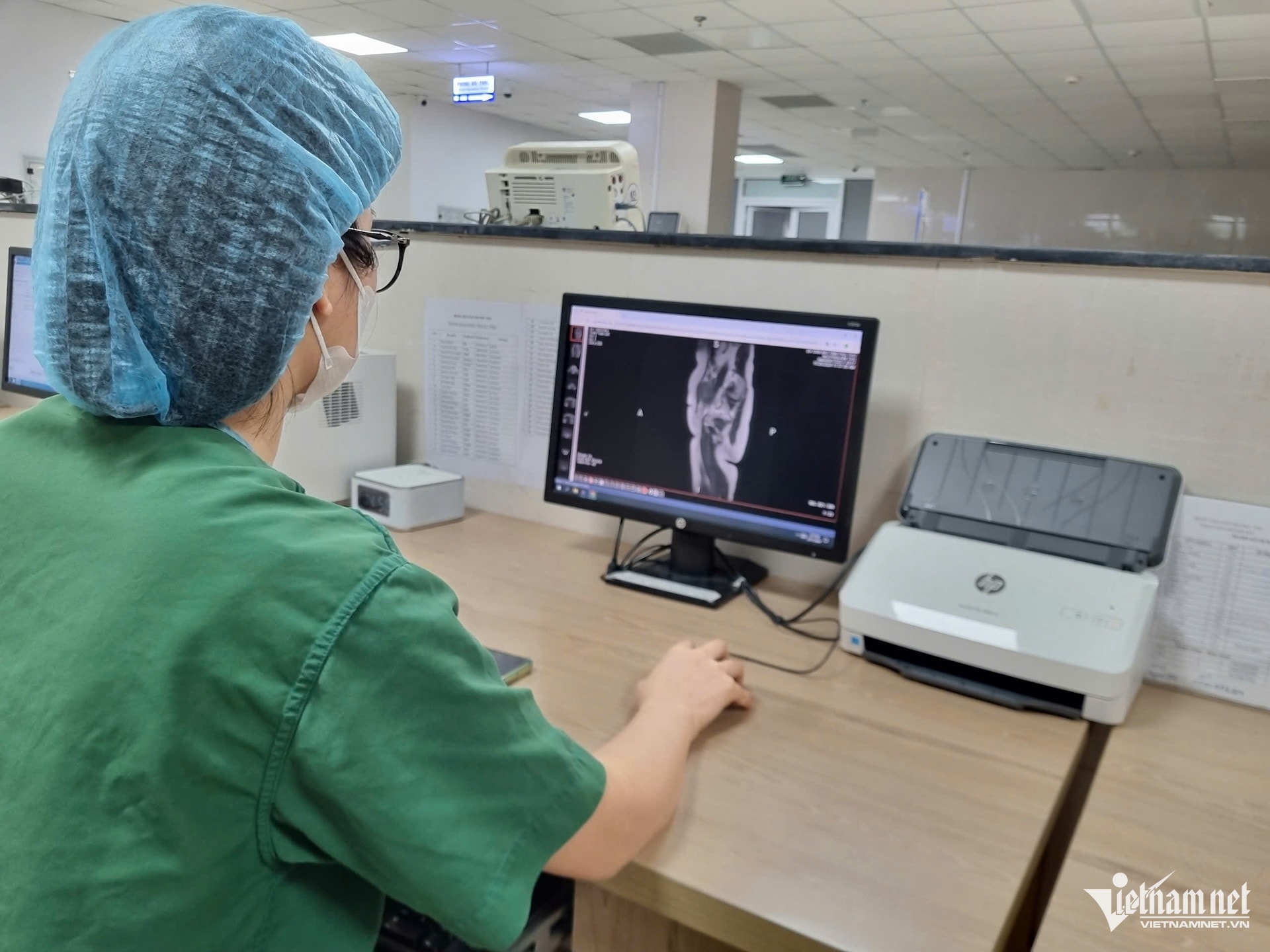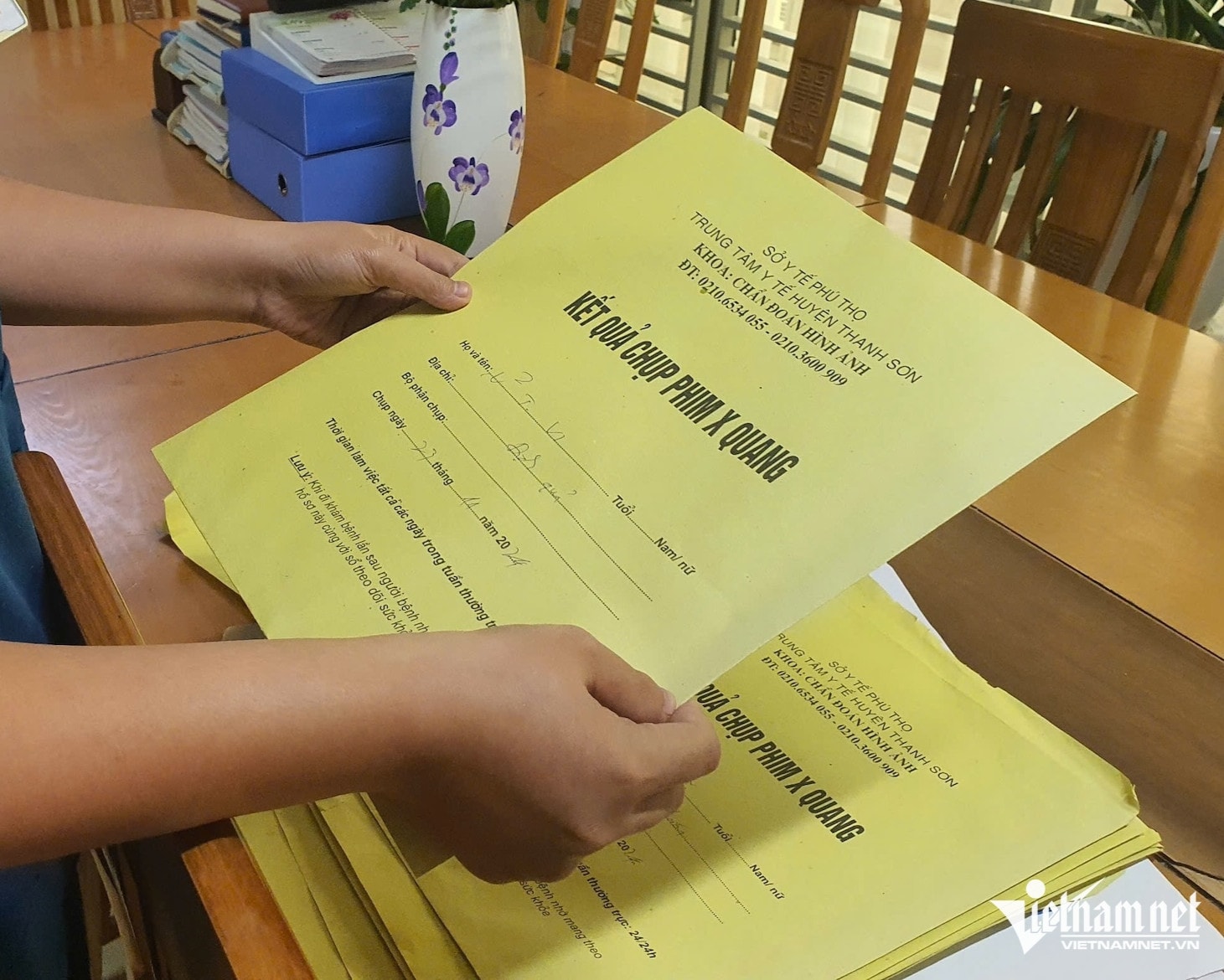If health insurance is accepted to pay for not printing X-ray, MRI, and CT scan films, hospitals using PACS systems can save billions of dong each year.

Statistics from the Ministry of Health show that Vietnam has nearly 1,500 public hospitals, more than 380 private hospitals, and nearly 70,000 private clinics. According to the requirements in Circular 46/2018 of the Ministry of Health, by the end of 2023, all grade I hospitals must implement electronic medical records. To date, only more than 100 hospitals have announced the switch to using this type of medical record (of which only more than 30 are grade I hospitals or higher), although the benefits of electronic medical records are not only convenient for the medical examination and treatment process but also protect the environment.
“This progress is not as expected,” the Ministry of Health assessed at the Workshop on finalizing the draft Circular guiding the implementation of electronic medical records held in October. Although according to the Ministry of Health, these 100 hospitals “do not use paper medical records,” in reality, many medical units still use both types of medical records in parallel.
Thanh Son District Medical Center (Phu Tho Province) is a Grade II medical facility with 500 beds. Specialist II Doctor Nguyen Thi Ngoc Hoa, Director of the Center, said that using electronic medical records helps the hospital manage and reduce medical waste, ensuring the "clean" criteria.
Dr. Hoa said the center officially implemented electronic medical records from 2022. To date, all medical records are stored on the software system. "The hospital still stores paper medical records because there are still documents, forms, and vouchers related to the direct signature (the "fresh" signature) of the patient, in parallel with using electronic medical records," said Dr. Hoa.
The director said that a paper medical record can be up to 50-60 sheets of A4 paper, now it is only 4-5 sheets. “Each year, the inpatient unit examines and treats about 22,000 patients. If all used paper medical records, the amount of printed paper would be up to 1.1 million sheets. Now, with electronic medical records, the amount of printed paper is reduced to only 1/10,” said Mr. Nguyen Huu Hoang, Head of the General Planning Department, Thanh Son District Medical Center.
Similarly, Phu Tho Obstetrics and Pediatrics Hospital, although it implemented electronic medical records right after its establishment, still maintains paper medical records containing a number of legal commitments (documents requiring the patient's "fresh" signature).
The leaders of Phu Tho Province Obstetrics and Pediatrics Hospital and Thanh Son District Medical Center said that the gradual shift of medical units from developing X-ray films to digital, digital conversion, and storage on the Medical Image Archiving and Communication System (PACS) is a big step forward in reducing the generation of film developing solutions - hazardous liquid waste; minimizing ink, printing paper or plastic waste from X-ray, magnetic resonance imaging (MRI) or computed tomography (CT) films released into the environment.
Specialist II Doctor Bui Trong Quynh, Deputy Director of Phu Tho Obstetrics and Pediatrics Hospital, said that using electronic medical records and storing film images on PACS will minimize the printing of medical records or paper orders, helping to save printing costs or actual storage space; electricity and dehumidification costs; reducing the cost of destroying expired medical records while also protecting the environment (reducing dust and environmental pollution). "Using electronic medical records and PACS will help hospitals become cleaner," the facilities said.
Phu Tho is one of the top provinces/cities in the country with many medical units using electronic medical records. However, similar to many localities, hospitals using PACS in this province will not pay for the film if they do not print the film because the Ministry of Health has not issued specific instructions on the price of health insurance. Currently, only Phu Tho Provincial General Hospital and Cam Khe District Medical Center (in the pilot group according to the Ministry of Health's project) are paid for health insurance without printing the film.
For patients who do not use health insurance, facilities have two methods of returning scan results to patients: via QR code or printing on disk.

At Thanh Son District Medical Center, Mr. Hoang said that each year the unit spends more than 1.1 billion VND to import films to print for patients. Meanwhile, in the first 10 months of this year, Phu Tho Obstetrics and Pediatrics Hospital printed about 52,100 X-ray films, more than 3,300 CT and MRI films. The average cost of buying films is about 26,000 VND/film, not including the cost of ink, electricity, etc.
In fact, at large hospitals like Bach Mai, each year it spends 70 billion VND on printing X-ray films, about 3 billion VND on buying ink, 4-5 billion VND on buying paper to print prescription documents. This hospital calculates that it has saved nearly 80 billion VND in the medical budget when applying electronic medical records, without the need to print documents and X-ray films.
According to the Ministry of Health's calculations a few years ago, the cost of buying film each year for hospitals in Vietnam was about 2,000 billion VND. Associate Professor, Dr. Tran Quy Tuong, Chairman of the Vietnam Medical Informatics Association, said that with PACS software when applied in our country, the cost is only 50% of the value of the film. If PACS is deployed synchronously, it will not only help medical facilities save money and improve the quality of diagnosis, but also protect the environment because there is no need to print film.
Five years ago, the Ministry of Health said that there were 23 medical facilities nationwide that were providing X-ray, CT, and MRI services without printing films and were paid for by health insurance. On November 27, the leader of the National Center for Health Information under the Ministry of Health said that this number “remains the same.”
On average, each provincial hospital needs to invest more than 10 billion VND to deploy electronic medical records. For large-scale hospitals such as Bach Mai, Viet Duc Friendship... in Hanoi, the investment amount is much larger. However, the requirement to print X-ray films if they want to be paid by health insurance puts hospitals in a situation of incurring "double costs": having to spend billions of VND on purchasing, printing, storing and destroying X-ray films (affecting the environment), the cost of buying bags to hold regular X-ray films (about 3,000 VND/bag) or CT films (about 6,000 VND/bag), and the cost of operating and maintaining information technology equipment, the PACS system - an important component of electronic medical records.
Therefore, at the Workshop in October, Deputy Minister of Health Nguyen Tri Thuc asked research units to propose perfecting policy mechanisms, especially regulations on information technology costs, prices when implementing PACS, etc. This will not only speed up the implementation of electronic medical records nationwide but also contribute to making hospitals cleaner.
TH (according to Vietnamnet)